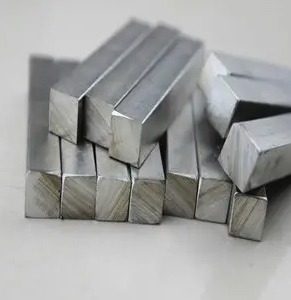Stainless steel bright bars are widely used in various industries due to their excellent corrosion resistance, durability, and smooth, shiny appearance. However, like any material, they are susceptible to surface wear over time, especially when subjected to harsh environments, frequent handling, or mechanical stress. Surface wear can affect the performance, appearance, and overall quality of the stainless steel bright bars. This article will discuss common causes of surface wear and offer practical solutions for addressing and preventing it.
Causes of Surface Wear on Stainless Steel Bright Bars
- Mechanical Abrasion: One of the most common causes of surface wear is physical abrasion caused by friction during handling, transportation, or machining processes. Contact with hard surfaces or sharp tools can lead to scratches, dents, and scuffs on the stainless steel bar.
- Corrosion: Although stainless steel is highly resistant to corrosion, it can still be affected in environments with high chloride concentrations or under extreme conditions. Pitting corrosion or stress corrosion cracking can compromise the integrity of the surface, leading to wear over time.
- Environmental Factors: Prolonged exposure to harsh environmental conditions, such as extreme temperatures, humidity, or industrial pollutants, can also contribute to surface degradation. Constant exposure to chemicals or seawater, for instance, can accelerate the wear and corrosion of the stainless steel.
- Improper Handling or Storage: If stainless steel bright bars are improperly stored or handled, they can become scratched, bent, or dented. Placing the bars in direct contact with harder materials or stacking them incorrectly can result in surface wear.
Solutions for Addressing Surface Wear

- Surface Polishing: One of the simplest ways to restore the appearance and smoothness of a worn stainless steel bright bar is by polishing the surface. Depending on the extent of the wear, different polishing techniques, such as mechanical buffing or electropolishing, can be used to remove scratches, scuffs, and other surface imperfections. Polishing helps to restore the bright, reflective finish that the bar originally had.
- Passivation: For stainless steel, passivation is a chemical treatment process that enhances the natural corrosion resistance of the metal. The process involves removing contaminants and forming a protective oxide layer on the surface, which minimizes future wear and corrosion. This is particularly useful in environments prone to high humidity or exposure to corrosive chemicals.
- Regular Maintenance: Regular cleaning and maintenance can significantly extend the life of stainless steel bright bars. Cleaning them with non-abrasive cleaners, mild detergents, or specialized stainless steel cleaners can help remove dirt, grime, and contaminants that contribute to surface wear. Ensuring the bars are dried thoroughly after cleaning helps to prevent water spots or corrosion.
- Protective Coatings: Applying a protective coating or surface treatment can prevent further wear by providing an additional layer of defense against friction, chemicals, and environmental exposure. Common coatings include paint, powder coating, or special chemical treatments designed to enhance corrosion resistance.
- Proper Handling and Storage: To minimize surface wear, stainless steel bright bars should be handled and stored with care. Using padded or soft materials for transportation, ensuring bars are separated from harder metals, and storing them in dry environments will reduce the risk of scratches, dents, and corrosion. Proper training of personnel in handling the material is also crucial to prevent accidental damage.
Preventive Measures
While it is possible to address surface wear once it has occurred, prevention is always preferable. Here are some preventive measures:
- Use of Proper Tools and Techniques: When machining or processing stainless steel bright bars, ensure that tools are sharp and appropriate for the task. Blunt or inappropriate tools can cause unnecessary friction, leading to surface wear.
- Regular Inspections: Conducting periodic inspections of stainless steel bars helps identify early signs of wear or damage, allowing for prompt corrective action before the issue worsens.
- Avoid Harsh Chemicals: When cleaning or processing stainless steel, avoid using harsh chemicals that can corrode the surface. Instead, use products specifically designed for stainless steel care.
Surface wear on stainless steel bright bars is a common issue that can be caused by a variety of factors, including mechanical abrasion, environmental conditions, and improper handling. However, with the right maintenance practices and preventive measures, the longevity and appearance of stainless steel bright bars can be preserved. Addressing surface wear through polishing, passivation, and protective coatings ensures that these essential components continue to perform at their best in various industrial applications.
